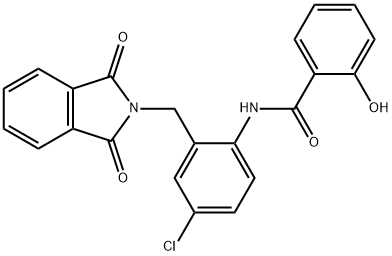| Description: |
CPPHA is a selective positive allosteric modulator of mGluR5 receptor.
in vitro: The selective mGlu5 receptor positive allosteric modulator, N-{4-chloro-2-[(1,3-dioxo-1,3-dihydro-2H-isoindol-2yl)-methyl]phenyl}-2-hydrobenzamide (CPPHA) potentiated the response to a subthreshold concentration of 3,5-dihydroxy-phenylglycine (DHPG) on extracellular signal-regulated protein kinase (ERK) and cyclic-AMP responsive element-binding protein (CREB) activity, as well as N-methyl d-aspartate (NMDA) receptor subunit NR1 phosphorylation in cortical and hippocampal slices. CPPHA potentiated threshold responses to glutamate in fluorometric Ca(2+) assays 7- to 8-fold with EC(50) values in the 400 to 800 nM range, and at 10 microM shifted mGluR5 agonist concentration-response curves to glutamate, quisqualate, and (R,S)-3,5-dihydroxyphenylglycine (DHPG) 4- to 7-fold to the left. CPPHA (10 microM) potentiated NMDA receptor currents in hippocampal slices induced by threshold levels of DHPG, whereas having no effect on these currents by itself. Similarly, 10 microM CPPHA also potentiated mGluR5-mediated DHPG-induced depolarization of rat subthalamic nucleus neurons. CPPHA induced an increase in basal mGluR5-mediated ERK1/2 phosphorylation and potentiated the effect of low concentrations of agonists. In contrast, CPPHA significantly decreased ERK1/2 phosphorylation induced by high concentrations of agonists. |






















